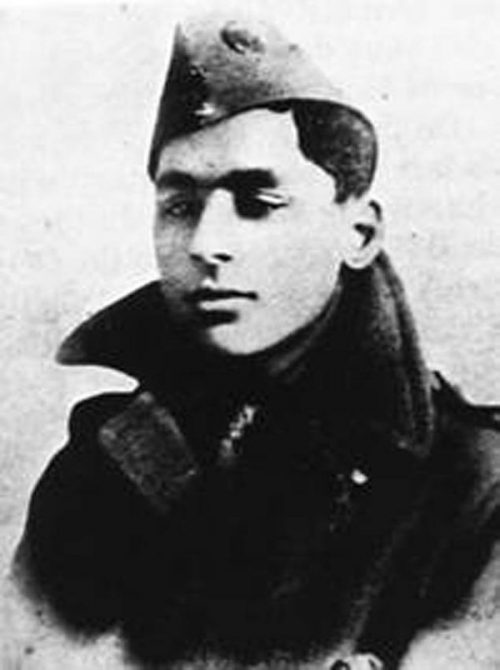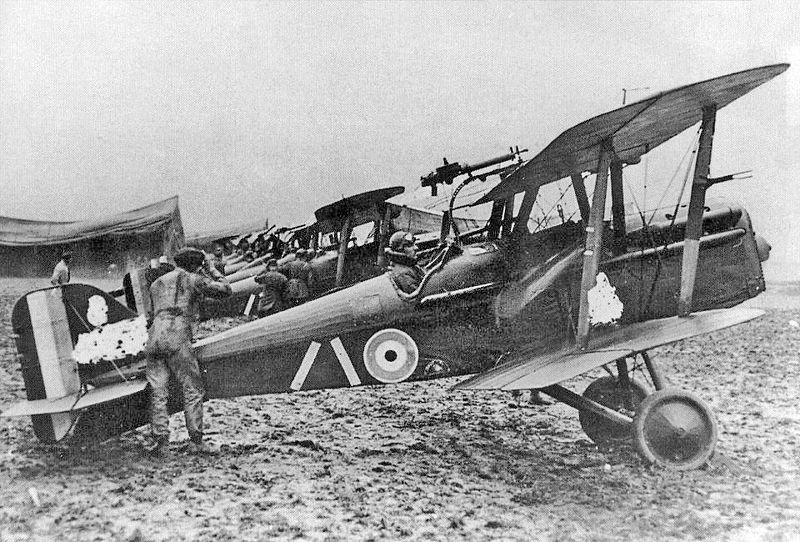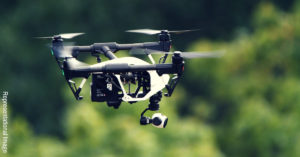This Forgotten Pilot Was Just 19 When He Became India’s First and Only Flying Ace
Among the handful of Indians pilots who fought in the World War I was a young boy who would go on to become India's first fighter ace. Here's the incredible story of Indra Lal Roy.

World War I had about 1.5 million Indians fighting in every theatre of the battle. Among the handful of Indians who fought in the air was a gifted combat pilot who would go on to become India’s first fighter ace, Indra Lal ‘Laddie’ Roy. Yet few Indians know about the story of this incredible air warrior from Bengal.

The second son of Piera Lal Roy and Lolita Roy, Indra Lal Roy was born in Calcutta (now Kolkata) on December 2, 1898. The Roy family had a history of illustrious individuals. His father was a highly-respected barrister who served as the Director of Public Prosecution. His maternal grandfather, Dr. Surya Kumar Chakraborty, was one of the first Indian doctors to be trained in western medicine while his elder brother, Paresh Lal Roy (who served in the Army’s artillery battalion) would later go on to be known as the father of Indian boxing.
In 1901, Roy’s family moved to London. He was still in school when World War I erupted on July 28, 1914. Determined to do his bit, he signed up for the cadet force at his school, the 400-year-old St Paul’s School for Boys at Hammersmith. The bright teenager also designed a trench mortar and sent the design to the War office along with notes on its advantages.
Impressed by his academic record and innovative designs, Roy was awarded a scholarship by Oxford University. However, the young boy (affectionately nicknamed Laddie by his friends and family) had another dream in his eyes: becoming a fighter aircraft pilot. As soon as he could, he applied to the Royal Flying Corps (the Royal Air Force (RAF) was yet to be formed) but was rejected on grounds of ‘defective’ eyesight.

But Roy was not someone who would give up so easily. He sold his motorbike to pay for a second opinion from one of Britain’s leading eye specialists. This time, he cleared the eye test and successfully appealed to the Royal Flying Corps to overturn his rejection. On July 5, 1917, the feisty eighteen-year-old was formally commissioned into the RFC and posted to No. 56 Squadron (that flew the iconic S.E.5 ‘scout’ fighters).
Popular among his fellow pilots for his youthful exuberance, Roy was soon flying his plane in the skies above Vendome in France, often doing daring maneuvers far beyond his age and experience. It was during this time, on December 6,1917, that he suffered a crash after his plane was shot down by a German fighter.
Badly injured, an unconscious Roy was moved to the local hospital where he was taken for dead and laid out in the morgue. On regaining consciousness, he banged loudly on the morgue’s door while shouting out in his school-boy French!
After the door was finally opened by the terrified hospital staff, the boy ‘who had come back from the dead’ was promptly sent back to England for further treatment. While recovering from the crash, he spent his time making numerous sketches of aircrafts (many of which are now displayed at the IAF museum in Delhi).

After his accident, Roy had been declared unfit to fly. But the stubborn lad was determined to return to the skies and pestered his seniors till they finally gave in. In June 1918, he returned to duty and was posted to No 40 Squadron of the RAF (that had been formed two months earlier by merging the RFC and the Royal Naval Air Service).
More focussed than ever before, Roy was determined to train harder and become one of the best fighter pilots in the RAF. Within a month, he brought down his first German plane during a skirmish in Northern France. This was just the beginning of his exemplary career as a combat pilot.
Over the next two weeks, Roy achieved ten victories, becoming India’s first flying ace in just over 170 hours of flying time (a flying ace is a fighter pilot credited with shooting down five or more enemy aircrafts). This brilliant spell included three victories over Fokker DVIIs (the legendary German combat aircraft considered so threatening that its handover was made compulsory under the Armistice Agreement between Germany and the Allied powers).
Unfortunately, the talented pilot didn’t survive the war. Roy was shot down on July 22, 1918, when his plane was attacked by four Fokker DVIIs during a daring sortie. The gutsy pilot fought back with all he had, taking down two of the enemy aircrafts. However, hit by the relentless gunfire from the Fokker DVIIs, his plane burst into flames before crashing into German-controlled territory. He was just 19 years old when he breathed his last.

Such was the brave Bengali teenager’s reputation as a pilot that even the Red Baron (Manfred von Richtofen), the celebrated German flying ace, paid him a tribute by dropping a wreath from the skies at the spot where his plane had crashed. In September 1918, he was posthumously decorated with the Distinguished Flying Cross, the first Indian to be awarded the honour.
Indra Lal Roy was buried at the Estevelles Communal Cemetery, about 100 km north of the grave of another Indian combat pilot of World War I, Lieutenant Srikrishna Welingkar. His grave bears a simple inscription in Bengali that reads “Maha birer samadhi; sambhram dekhao, sparsha koro na” (The grave of courageous warrior; respect it, do not touch it).
Post script: Indra Lal Roy’s nephew, Subroto Mukerjee also served as a fighter pilot during World War II and went onto become the first Chief of Air Staff of the Indian Air Force.
You May Like: The Untold Story of a Legendary Band of Men Who Laid the Foundation for the Indian Air Force
Like this story? Or have something to share? Write to us: [email protected], or connect with us on Facebook and Twitter.
NEW: Click here to get positive news on WhatsApp!

Similar Story

Mohali Engg Student Designs UAV for IAF, Gets Interest From Defence Ministry!
A final-year student of BTech (Mechanical) at the Chandigarh Group of Colleges in Mohali, his design of an unmanned aerial vehicle (UAV) for the Indian Air Force (IAF) is gaining limelight among top brass, including the Department of Defence Production.
Read more >
If you found our stories insightful, informative, or even just enjoyable, we invite you to consider making a voluntary payment to support the work we do at The Better India. Your contribution helps us continue producing quality content that educates, inspires, and drives positive change.
Choose one of the payment options below for your contribution-
By paying for the stories you value, you directly contribute to sustaining our efforts focused on making a difference in the world. Together, let's ensure that impactful stories continue to be told and shared, enriching lives and communities alike.
Thank you for your support. Here are some frequently asked questions you might find helpful to know why you are contributing?


This story made me
-
97
-
121
-
89
-
167












